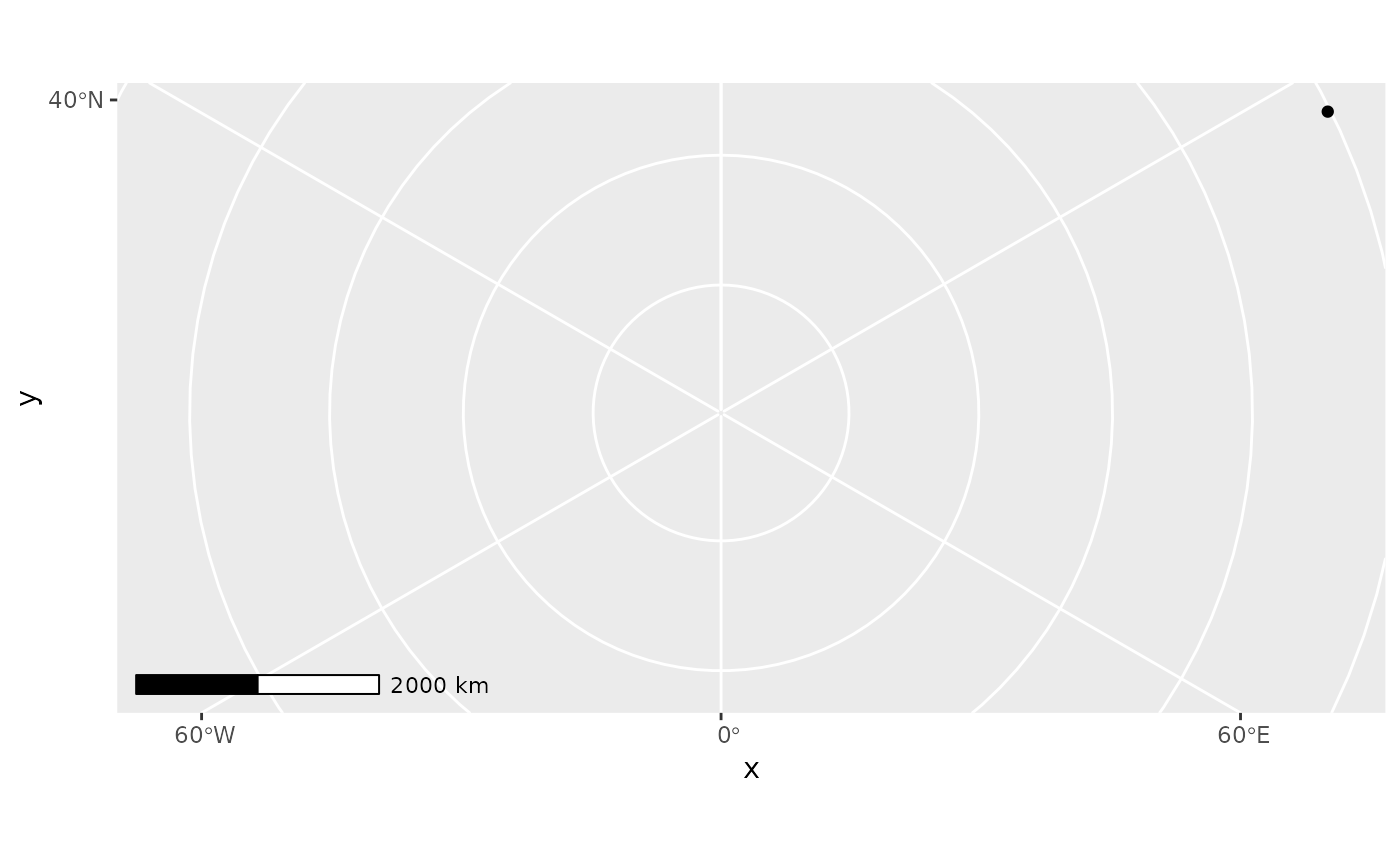Spatial-aware scalebar annotation
annotation_scale(
mapping = NULL,
data = NULL,
...,
plot_unit = NULL,
bar_cols = c("black", "white"),
line_width = 1,
height = unit(0.25, "cm"),
pad_x = unit(0.25, "cm"),
pad_y = unit(0.25, "cm"),
text_pad = unit(0.15, "cm"),
text_cex = 0.7,
text_face = NULL,
text_family = "",
tick_height = 0.6
)
GeomScaleBarFormat
An object of class GeomScaleBar (inherits from Geom, ggproto, gg) of length 5.
Arguments
- mapping, data, ...
See Aesthetics
- plot_unit
For non-coord_sf applications, specify the unit for x and y coordinates. Must be one of km, m, cm, mi, ft, or in.
- bar_cols
Colours to use for the bars
- line_width
Line width for scale bar
- height
Height of scale bar
- pad_x, pad_y
Distance between scale bar and edge of panel
- text_pad, text_cex, text_face, text_family
Parameters for label
- tick_height
Height of ticks relative to height of scale bar
Value
A ggplot2 layer.
Aesthetics
The following can be used as parameters or aesthetics. Using them as
aesthetics is useful when facets are used to display multiple panels,
and a different (or missing) scale bar is required in different panels.
Otherwise, just pass them as arguments to annotation_scale.
width_hint: The (suggested) proportion of the plot area which the scalebar should occupy.
unit_category: Use "metric" or "imperial" units.
style: One of "bar" or "ticks"
location: Where to put the scale bar ("tl" for top left, etc.)
line_col and text_col: Line and text colour, respectively
Examples
cities <- data.frame(
x = c(-63.58595, 116.41214),
y = c(44.64862, 40.19063),
city = c("Halifax", "Beijing")
)
ggplot(cities) +
geom_spatial_point(aes(x, y), crs = 4326) +
annotation_scale() +
coord_sf(crs = 3995)
